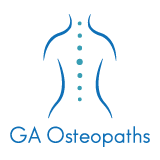What is the Difference between an Osteopath and a Chiropractor?
This is probably one of the most commonly asked questions in clinic, answering it from an osteopath’s perspective is likely to be contentious in the eyes of a chiropractor and vice-versa. However before we look at the differences, let’s take a moment to look at the definitions for Osteopaths, Chiropractors and Physiotherapists as described by the National Council for Osteopathic Research.Accessed 04/12/2018
Definition of an Osteopath (General Osteopathic Council (GOsC)
“Osteopathy is a system of diagnosis and treatment for a wide range of medical conditions. It works with the structure and function of the body, and is based on the principle that the wellbeing of an individual depends on the skeleton, muscles, ligamentsand connective tissues functioning smoothly together.”
Definition of a Chiropractor (General Chiropractic Council (GCC)
“Chiropractic is a primary healthcare profession that specialises in the diagnosis, treatment and overall management ofconditions that are due to problems with the joints, ligaments, tendons and nerves, especially related to the spine.”
Definition of a Physiotherapist (Chartered Society of physiotherapists (CSP)“Physiotherapy helps restore movement and function to as near normal as possible when someone is affected by injury, illness or bydevelopmental or other disability.”
The difference between Chiropractors and Osteopaths.
The difference from my point of view is that whilst they are similar in many respects, there are subtle differences between osteopathy and chiropractic approaches.
Similarities
- Both share a common history and philosophy which set them apart from the more traditional allopathic fields of medicine.
- The primary objectives of both osteopathy and chiropractic are most frequently the relief of aches and pains in the body.
- Both treat more than just bone joints and soft tissues.
- Both work on the nervous system and blood supply in order to influence all the bodily systems. This makes them capable of alleviating the symptoms of many diagnosed medical conditions such as circulatory problems, digestive disorders and migraine prevention to name a few.
- In diagnosing patients, osteopaths and chiropractors both use observation and touch
Differences
- Osteopathy was founded twenty one years before the chiropractic discipline.
- Chiropractors tend to focus mainly (but not exclusively) on the alignment of the spine as the primary means to relieve pain by preventing any compromise of the nervous system, whereas osteopaths look at the body as a whole and help improve its function by correcting the overall structure.
- Osteopaths treat a broader range of functional problems, including issues such as circulatory and digestive system disorders.
- Chiropractors use more diagnostic procedures such as X-rays, MRI scans, blood tests and urine tests, whereas osteopaths place more emphasis on physical examination, and will generally refer patients on for more diagnostic procedures if required.
- Osteopaths tend to use a greater variety of techniques to influence the body’s own innate healing system such as muscle and soft tissue work, joint articulation and manipulation, whereas chiropractors use a wider number of techniques for the “adjustment” on the vertebrae, similar to osteopathic manipulation, to facilitate optimal nerve transition.
- Chiropractic appointments tend to be shorter (in most cases) as they primarily focus on adjustment techniques which are quicker to carry out.
- Osteopaths spend more time with their patients per visit as their approach is broader and treatments tend to be spaced out over a longer period of time.
- Chiropractors tend to see patients more frequently.
Of course, these are generalisations and all practitioners treat differently, some osteopaths may seem closer to the chiropractic way and some chiropractors may appear to treat more osteopathically but hopefully this will help to put across some of the main trends.
